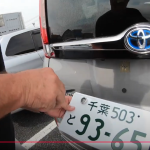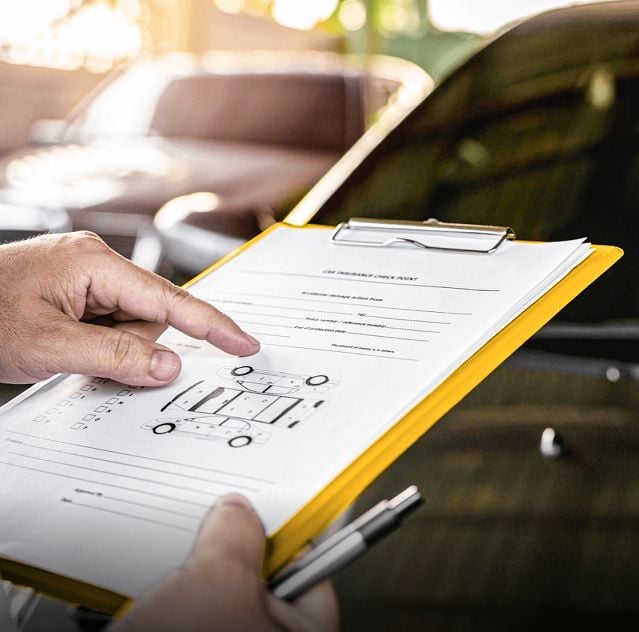

How to Read a Japanese Car Auction Sheet Like a Pro
Japanese car auction sheets are packed with information. But most buyers find them confusing at first glance. There’s a mix of Japanese characters, numbers, grades, and a car diagram full of codes. But once you know how to read them, these sheets become your best friend in the auction game. This guide will help you decode the sheet like a pro—step by step. Yes we know this is a double up but its clear.
What Is a Japanese Car Auction Sheet?
When a car is listed at a Japanese auction like USS or JU, it comes with an official inspection sheet. This document tells you everything about the car:
- Mileage and year
- Mechanical condition
- Interior and exterior grade
- Any damage or repairs
- Optional features
- Seller notes
Auction inspectors go over the car in detail before it’s listed. They look at dents, paint, rust, engine condition, and more. Then they give it a grade and draw a diagram showing damage.
Why the Auction Sheet Is So Important
Most foreign buyers never see the car in person before buying. So the auction sheet is your eyes and ears. It helps you:
- Avoid accident-damaged vehicles
- Spot hidden rust or wear
- Find cars in genuine condition
- Understand what you’re really bidding on
- Choose high-resale value stock for your market

The Main Sections of the Auction Sheet
Every sheet layout is a little different depending on the auction house, but the core information is the same. Here’s how to read it section by section.
1. Basic Car Information
At the top, you’ll see the car’s vital stats:
- Make & Model: Example: Toyota Crown
- Chassis Code: Like GRX130 or ZZT231
- Year/Month of Registration: Often shown in Japanese year format
- Mileage: In kilometers, not miles
- Transmission Type: AT (automatic), MT (manual), CVT
- Fuel Type: Gasoline, diesel, hybrid
- Drive: 2WD, 4WD, or AWD
- Color: Often in Japanese (e.g., 白 = white)
2. Overall Auction Grade
This tells you the general condition of the car.
- Grade 6 / 5 / 4.5 = Like new
- Grade 4 = Very clean, some small marks
- Grade 3.5 = Average used car
- Grade 3 = Needs some work
- Grade 2 or R / RA = Accident-repaired
- **Grade 0 or *** = Heavy damage or unknown
Interior is graded separately with letters: - A = Excellent
- B = Good
- C = Average
- D = Bad
Pro Tip: A car with 4/B is very acceptable for resale.
3. Equipment and Features
This line often includes optional extras:
- AAC: Auto air conditioning
- PS: Power steering
- PW: Power windows
- AW: Alloy wheels
- SR: Sunroof
- Navi: Navigation system
- TV: Television
- Airbags, ETC, and more
4. Seller/Inspector Comments
This section is usually handwritten in Japanese. It may mention:
- Engine noise
- Oil leaks
- Transmission slip
- Rust underbody
- Repainted panels
- Tire wear
- Warning lights
- Auctioneer recommendations
Pro Tip: Use a trusted agent like www.uss-ninja.com to translate this section clearly for you.
5. Car Diagram (Damage Map)
This visual is the most critical part for many buyers. It shows damage location and type.
Common Damage Codes:
- A1-A3: Scratches (A3 is deep)
- U1-U3: Dents (U3 is big)
- W1-W3: Wave or panel distortion
- X: Needs replacement
- XX: Has already been replaced
- S: Rust
- C: Corrosion
- G: Stone chip
- P: Paint fade or peel
The numbers next to the codes indicate severity. For example: - A1 = Minor scratch
- A3 = Deep, long scratch
- U1 = Small dent
- U3 = Large dent
Pro Tip: A car with only a few A1 or U1 marks is usually in great condition.
Real-Life Example
Let’s say you’re looking at a 2013 Toyota Crown:
- Grade: 4.0 exterior / B interior
- Mileage: 51,000 km
- Damage: U1 on left door, A2 on rear bumper
- Seller note: Minor scratch, good condition, dealer-maintained
That’s a clean car. Ideal for export to markets like NZ, UAE, or the UK.
Community Voices
“Auction sheets were confusing at first, but now I can spot a bargain in 10 seconds.” – Liam, Ireland
“Once I learned what W2 and A3 meant, I stopped buying bad stock.” – Moez, Dubai
“I only buy grade 4 and up. It saves me money on repairs later.” – Nina, Trinidad
Real Buyer Questions Answered
What’s the best grade to buy?
Grade 4 or 4.5 with an A or B interior is ideal for resale or personal use. Lower grades often mean repairs.
Can I trust the auction sheet?
Yes, especially from USS, TAA, and Aucnet. These are professionally inspected and highly reliable. Still, use a trusted agent to verify everything.
What’s the difference between R and RA?
Both mean repaired accident cars. RA is light repair; R might mean more serious damage.
Can I see auction sheets before bidding?
Yes. Your agent can provide them for every car. www.ussninja.com gives full access with translations.

Should I avoid cars with XX on the diagram?
Not always. Replaced panels can still mean good quality if the repair was done professionally.
Common Mistakes to Avoid
- Ignoring the diagram: Minor dents matter in resale
- Assuming grade 3 = good: It usually means average with visible issues
- Skipping interior grade: A clean interior boosts value
- Not translating remarks: They often reveal hidden flaws
- Bidding blind: Always review the sheet before committing
Summary: Mastering the Auction Sheet
If you want to buy from Japanese auctions confidently, you must learn to read the sheet. It’s your weapon for avoiding junk cars and finding diamonds in the rough. With practice, you’ll read these sheets faster and spot great deals others miss.
Look at the grade. Check the diagram. Translate the remarks. Review the options. Make your move.
Buying smart begins with understanding what you’re really buying.
FAQ – Reading Japanese Auction Sheets
Q: What if I don’t read Japanese?
A: Use an agent like www.ussninja.com. They translate sheets and walk you through it.
Q: Are the inspectors honest?
A: Yes. Auction inspectors are professionals. Sheets from USS, TAA, and JU are highly accurate.
Q: Can I ask for more photos?
A: Some auctions allow this. Others do not. Your agent will request what’s possible.
Q: Are accident cars bad?
A: Not always. Lightly repaired vehicles can be fine. But avoid Grade 0 or cars with heavy rust and W3 marks.
Q: What about export laws?
A: The sheet helps verify eligibility for import (e.g., emissions or safety). Always confirm with your agent.
Call to Action
Still confused by auction sheets? Don’t worry. Our experts at www.uss-ninja.com decode every sheet for you—clearly and honestly. We show you what others won’t. From damage codes to dealer comments, we make sure you know exactly what you’re bidding on.
Avoid costly mistakes. Bid smarter. Buy like a pro.
Join thousands of buyers who trust www.ussninja.com to handle their Japan car auction journey. Start today.
Table of Contents
Add a comment Cancel reply
Categories
- Auto Detailing (6)
- Car News (61)
- Car Reviews (50)
- Classic Cars (26)
- Importing Rules By Country (9)
- Japan Car Auctions (14)
- JDM (21)
- News (4)
- Uncategorized (31)
Recent Posts
About us

I am not one for writing articles actually so most of these articles come from contributors that I have met over the years or with a little help of supporters.
If you have any desire to import a car from Japan or simply need some advice get in touch via Whatsapp here at +81-90-5400-6384
Looking For That Special Car Has Never Been Easier.
Finding the right car in Japan is not always easy and finding the best partner in Japan to help you with this is sometimes even harder.
With over 25 years buying history and great contacts all over Japan I can help you in every way.
Get hold of me today!
Popular Tags
Related posts


Japan Car Auctions vs. Local Dealerships: Which Is Better for Import Buyers?


Is It Safe to Buy a Car Online From Japan? A Real Buyer’s Guide


What Happens After You Win a Car at a Japanese Car Auction?







